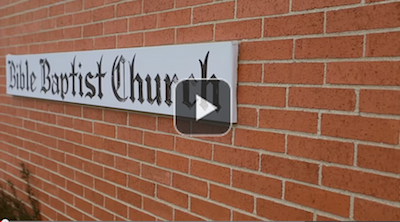JUNE 4, 2017
JESUS HEALS AN INFIRMED MAN AT BETHESDA
INTRODUCTION:
1. Jesus had sensed a growing hostility toward Him in Judea for sake of which “He left Judea and departed again into Galilee,” taking the direct route through Samaria. (Ch.4:1, 3, 4)
2. Having considered the marvelous events recorded in chapter four, we know that the growing hostility among the Jewish leaders was, in fact, more of a providential indication that it was time for Him to make this move. He had urgent business to take care of both in Samaria, and also in Galilee.
3. Now, after His tour in Galilee, Jesus returns to Judea to find that the Jewish hostility was not just imagined, but very real, and increasing, and eager for any occasion of expression.
4. From this time on, Jerusalem became the center of resistance. It was there that the hostile element would surround Jesus, constantly forcing Him into controversy. One great example of this is seen here when Jesus healed an impotent man at the pool of Bethesda.
I. HERE WE HAVE THE FIRST REAL OUTBREAK OF HATRED AGAINST CHRIST, OCCASIONED BY THE HEALING OF AN IMPOTENT MAN. (VERSES 1-9)
A. JESUS AGAIN LEFT GALILEE AND RETURNED TO JUDEA. (VERSE 1)
1. It was “after this,” meaning after His trip through Samaria to Galilee, and the events that took place, some of which are recorded in the previous chapter, but most likely there were more besides.
2. There are varied opinions about how long it had been since Jesus left. Some believe that He was gone for at least three months. Others believe that, except for a brief stay at Sychar, and perhaps at Cana, it was basically just travel time there and back.
3. It was during “a feast of the Jews,” that Jesus returned and went up to Jerusalem.
a) Many commentators believe it was the Feast of Passover. This would mean that one full year had passed since Jesus officially presented Himself as Messiah. (Ch. 2:13ff) It would also mean that Jesus, in the three and a half years of His earthly ministry, attended four Passovers. The other evangelists record only one, but John records all four. (Ch. 2:13; 5:1; 4:4l 13:1)
b) Calvin thinks it was Pentecost, arguing that Jesus departed for Galilee not long after Passover and the next feast on the Jewish calendar was Pentecost.
c) Others thing that it was neither of the above, but perhaps the feast of Purim, held in the month of March.
d) Jesus, knowing the danger, still entered again into Jerusalem because He desired to keep this feast.
B. UPON RETURNING TO JERUSALEM, JESUS WAS DRAWN TO A PLACE CALLED BETHESDA, WHERE THERE WERE MANY SICK PEOPLE.
1. He did not go first to the temple as he had done before. (Ch. 2:13) On that occasion He was making His official Messianic entrance according to the word of the prophet. (Mal. 3:1, 2)
2. On this occasion He went directly to Bethesda, a hospital setting where all manner of sick and disabled people came for care.
a) Bethesda means “house of mercy,” and was apparently established for the purpose of caring for the sick and infirmed.
b) It was located near to the sheep market, which was most likely by the sheep gate, a place where sacrificial animals were sold to temple-goers.
3. This facility had five porches, or porticoes arranged around a pool. Apparently these provided shelter for the impotent folk who would gather around the pool.
4. Jewish tradition believed an angel stirred the waters at certain times, enabling the healing of whomever stepped first into the stirring waters. (Verse 4)
C. JESUS TOOK SPECIAL NOTICE OF ONE PARTICULARLY NEEDY SOUL. (VERSES 5-9)
1. He was marked out by God’s purpose. “A certain man…”
2. He was a particularly pitiable case.
a) He had suffered his infirmity for 38 years.
b) He was completely helpless, i.e. totally immobile.
c) He was all alone and had none to befriend him.
d) He had given up all hope of being healed.
D. JESUS WAS MOVED WITH COMPASSION TO HELP THIS MAN. (VERSES 6-9)
1. Notice the question, “Wilt thou be made whole?” The question is an implied promise.
a) Jesus would lift his eyes up to the Personal Bethesda. Jesus, in His own person, is our “House of Mercy.”
b) Jesus would direct his hope, not to an angel coming to stir this pool, but to the Angel of the covenant, who was come with healing in His wings.
c) Jesus would have him not to look for help from some man (Verse 7), but from The Man Christ Jesus.
2. Jesus pronounced a healing command, which had in it also the power to perform. (Verse 8)
a) “Rise” – that which he had not the strength to do.
b) “Take up thy bed” – proof of his new-found strength.
c) “And walk” – the exercise of the healing he had received.
3. The healing was immediate and vital. (Verse 9)
a) It was not a slow healing process. “And immediately the man was made whole.” In the spiritual realm, regeneration is instantaneous.
b) The man obeyed the command, which was the clear evidence of his healing. One’s spiritual healing is made evident first in his willingness to obey his Lord’s commands, and second, in his ability to do so.
4. John here notes the fact that this was done on the Sabbath Day (Verse 9b), and important notation, considering the controversy which follows.
II. THE FIRST OUTBREAK OF HATRED AGAINST CHRIST WAS DUE TO THE RIDICULOUS, CRASS EXTERNALISM OF THE JEWS REGARDING THE SABBATH. (VERSES 10-16)
A. THEY WERE SO CONCERNED ABOUT A SUPPOSED LEGAL VIOLATION THAT THEY WOULD NOT REJOICE OVER THE WONDERFUL MIRACULOUS HEALING OF THIS MAN. (VERSE 10)
1. We can safely assume that the Jews knew of this man’s miserable condition, and that it had been long standing. He was certainly a familiar figure at the pool of Bethesda.
2. Yet they did not congratulate him or rejoice with him; neither did they praise God for this healing miracle, but instead, they charged the healed man with a legal violation.
a) The Rabbis said one could not carry a piece of furniture on the Sabbath Day. (This “bed” consisted of a mat that could be rolled up and carried on one’s shoulder.)
b) The Rabbis also taught that medical treatment could not be administered on the Sabbath Day.
c) Surely they overlook the weightier matter of the law. (Matt. 23:23)
B. THE MAN WHO WAS HEALED RIGHTLY PLED THE AUTHORITY OF THE ONE WHO HEALED HIM. (VERSE 11)
1. Who but one having Divine authority could perform such a miraculous healing. He therefore has all authority to command what He will.
2. This is certainly true with respect to Christ’s Lordship over those whom He raises up spiritually.
C. THE ATTENTION OF THE JEWS WAS NOW TURNED TO THIS UNKNOWN PERSON WHO HAD HEALED THIS MAN AND AUTHORIZED HIM TO TAKE UP HIS BED. (VERSES 12, 13)
1. The healed man honestly did not know who it was that healed him. This would indicate that his healing was only physical, unlike that of the nobleman’s son in the previous chapter. (Verse 13a)
2. The Jews may have suspicioned who it was, but they would be certain. (Verse 12)
3. It being a feast of the Jews, and the Sabbath Day, Jesus easily hid himself amidst the multitude. (Verse 13)
D. JESUS GAVE A NEEDED WARNING TO THE MAN THAT WAS HEALED. (VERSE 14)
1. He found him in the temple where he had gone to worship.
2. His sickness had apparently been because of some particular sin.
3. Jesus warns him of a worse consequence, even the loss of his soul.
4. We may parallel the physical healing with spiritual healing, but not everyone that received physical healing was necessarily healed spiritually.
a) If one is not delivered from sin, there is no evidence of spiritual healing.
b) Of the two, soul healing is infinitely better.
c) Many whose souls are in perfect spiritual health will not be freed from physical infirmity until they receive their new body.
E. THE HEALED MAN REPORTED JESUS TO THE JEWS. (VERSE 15)
1. This was not done maliciously (necessarily), but merely to answer their inquiry. (Verse 12)
2. It would seem, however, that he did report Jesus in order to turn the attention from himself regarding the legal infraction he had been charged with.
F. THE JEWS MANIFESTED A DEFINITE HATRED AGAINST JESUS. (VERSE 16)
1. As noted before, they probably suspicioned that it was Jesus who healed this man; or better yet, they knew it was Him.
2. Once it was confirmed, they forgot all about the healed man’s violation; they had “bigger fish to fry.”
3. They “persecuted Jesus,” i.e. sought His harm.
4. From that time on they planned to kill Him as a capital offender.



Speak Your Mind